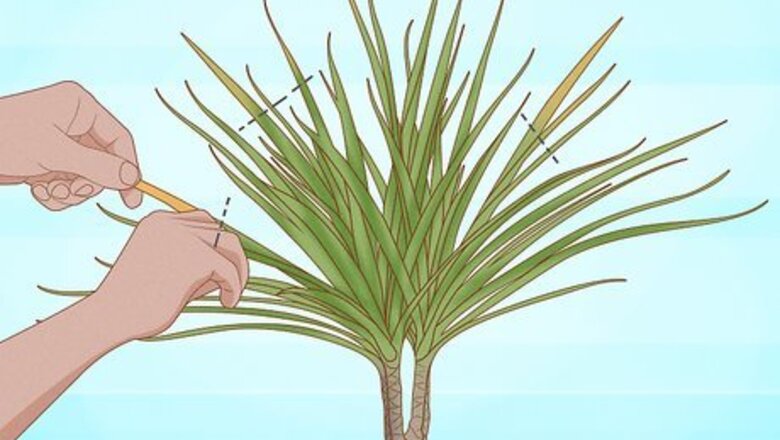
views
Trimming the Leaves
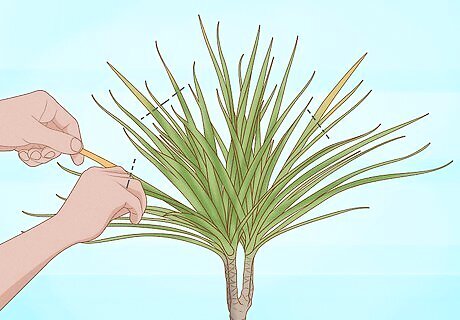
Peel off any brown or yellow areas on the leaves using your hands. If you notice any unhealthy leaves, you can simply remove them with your fingers. Rip the leaves where the discoloration starts so only the green areas remain. Look around the entirety of your plants and remove any discolored areas. Use gardening scissors instead of your fingers if it is easier for you. This keeps your plants looking great and reduces the risk of disease.
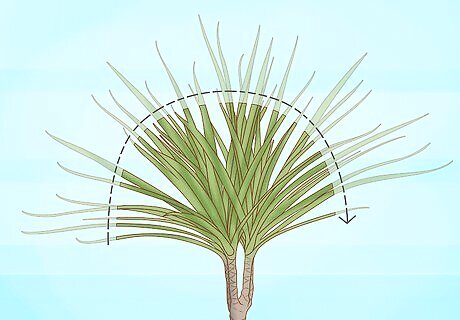
Cut your leaves to resemble the others if you want a uniform look. If you want your leaves to look polished and symmetrical, cut your leaves at an angle. Follow the shape of the other uncut leaves to make your leaves look realistic. This way, you can't even notice the leaves were trimmed!
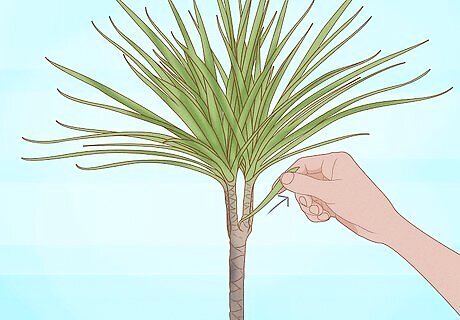
Snip off any damaged leaves growing out of the base of the cane. The cane refers to the stem of the plant. Use your fingers to separate the leaf from the cane, and use a pair of gardening scissors to cut off the leaf. Do this for any brown or wilted leaves you find. Make your cuts as close to the cane as you can.
Cutting the Stem

Remove a stem if it's growing out of form or to encourage upper growth. Oftentimes, dracaena species have 1 main stem and a few additional stems. If one of the stems grows out to the side and looks unattractive, cut the stem off using your pruning shears. You can either cut it at the base of the plant to remove the entire stem, or cut the stem to your desired height. The stem will grow a new branch at its new height. While this is optional, it will keep your plants looking neat and compact.

Cut the top of the main stem to create a compact, bushy shape. If you want a small, round dracaena plant, use your pruning shears to cut off just the top of the stem. Make your cut based on your desired height, though it can be between ¼ to ¾ of the total stem length. This encourages new branches to grow near the new top of the stem.
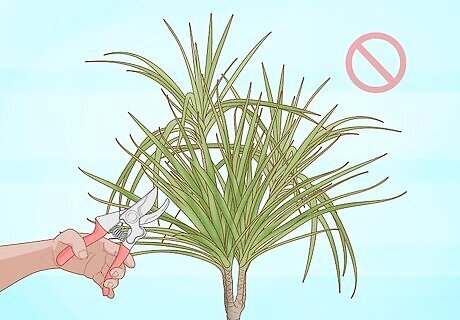
Avoid cutting your stem if you want a full, wild appearance. Keep in mind that pruning is optional with dracaena plants. If you want your plants to look full and luscious, let it grow throughout the season and prune it next year if you'd like. Let the stems grow and see where the branches form. You have the ability to customize your dracaena. However, once your plants reach the ceiling, you may want to at least trim the leaves!
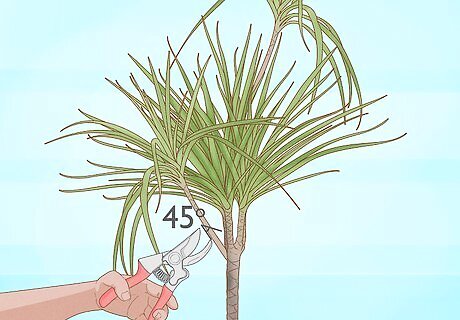
Make your cut at a 45-degree angle to keep the plant healthy. Look at your stem to see its growth direction, and angle your pruning shears so they are at a 45-degree angle at the stem. Tighten your shears quickly to make a clean cut. This reduces the risk of infection and allows your plants to heal quickly. If you want to replant your clippings, cut the stems straight across after making the 45-degree angle cut.

Cut your stem to your desired height. Pruning dracaenas is a matter of personal preference. You can cut off the entire stem if you want to reduce the total number of branches, or you can cut it half-way if you want to grow a more compact top. There is no explicit rules when it comes to pruning dracaena plants.
Pruning Strategically
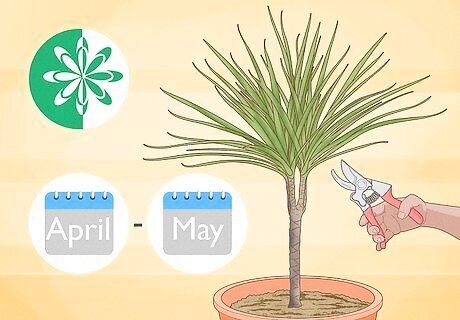
Prune your plants in the spring before they hit the growth period. From April to May, your dracaena plant comes out of rest mode and gets ready to go into the blooming season. Pruning your plants before they hit the growth period keeps them healthy. This also makes it easier to shape the plants into your ideal look. While you can prune your dracaena whenever you'd like, this helps encourage new, healthy growth.
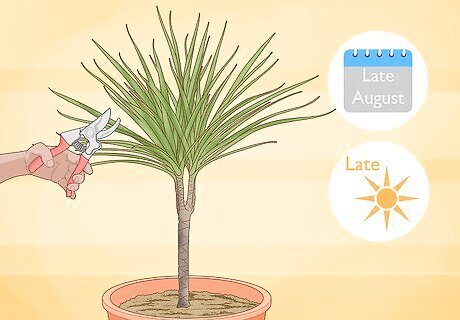
Prune them again in the late summer after their growth period is over. Remove leaves and/or stems again in late August after the growth period is over. From fall to winter, your plants are in rest mode, where they do not produce leaves and grow larger. To help the plant conserve energy, remove long leaves or stems before the rest period. This way, your plants can conserve nutrients and stay healthy during the colder months.
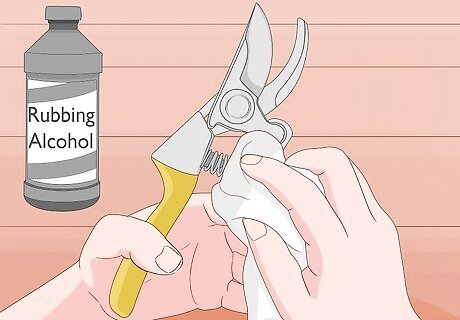
Use a clean, sharp knife or garden shears when pruning your dracaena. Always use a sharp blade or pruning shears when pruning your plants. If you use a dull blade, this can hurt the plant and make it more challenging for it to heal. Before you make your cuts, wipe down your garden shears with rubbing alcohol or an all-purpose disinfectant. Using a dirty blade can spread infection and disease. This keeps your plants healthy in between prunings. Alternatively, you can use a pair of gardening scissors.




















Comments
0 comment